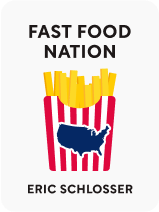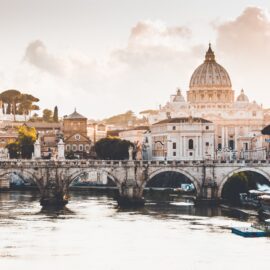

This article is an excerpt from the Shortform book guide to "Fast Food Nation" by Eric Schlosser. Shortform has the world's best summaries and analyses of books you should be reading.
Like this article? Sign up for a free trial here .
Is there McDonald’s in Europe? How did McDonald’s expand so rapidly?
McDonald’s in Europe is now almost as common as McDonald’s in the U.S. In fact, you can find a McDonald’s in almost every country on Earth.
Read more about McDonald’s in Europe and how the fast food chain spread all over the world.
McDonald’s in Europe: Fast Food World
Fast food began in Southern California as a quintessentially American product, boosted by US postwar prosperity and powered by the nation’s growing rates of automobile ownership, highway construction, and suburban sprawl. From these roots, the industry expanded to take over the rest of the country. But it hasn’t stopped there: fast food is now available in almost every country on the planet. Through this global conquest, it has reshaped how the entire world eats and lives.
Fall of the Iron Curtain, Rise of the Golden Arches
The collapse of the Soviet Union, beginning with the fall of the Berlin Wall in 1989 and ending in the final dissolution of the superpower state in 1991, was a dramatic moment in world history. All across Central and Eastern Europe, people took to the streets, refused to obey the orders of Soviet police and military officers, overthrew puppet Communist governments, and participated in free democratic elections for the first time ever. Little did they know that the fall of the Soviet empire would signal the rise of another: that of fast food. This opened the door for McDonald’s in Europe.
Just months after the fall of the Berlin Wall, McDonald’s announced that it planned to open a location in East Germany, the first in the former Soviet Union. Indeed, fast food chains have become a leading indicator of Western economic development in Third World or post-communist states. They are often the first international corporations to arrive after a country has made the decision to open its markets to foreign investment. In the early 1990s, McDonald’s frequently awarded franchises to former Communist officials, thanks to their proven combination of connections and leadership skills.
Fast food has aggressively positioned itself in former Soviet states and even recruited ex-Communist leaders to serve as spokespeople. In 1997, Mikhail Gorbachev, former General Secretary of the Communist Party of the Soviet Union, appeared in a Pizza Hut commercial. He was hired to serve as a warm and familiar face who could help introduce the Russian people to fast food. In the 1990s, Gorbachev was a frequent figure on the paid-lecture circuit, delivering speeches in which he advertised Russia’s openness to foreign investment to audiences of fast food executives.
The opening of the first McDonald’s in China, although still nominally a communist state, was met with great enthusiasm by the public in 1992. Thousands of people waited in line to take their first bite of a Big Mac, as the chain’s mere presence seemed to symbolize the long-awaited arrival of modernity. McDonald’s has shown few qualms about opening for business in culturally or religiously significant places—the golden arches are now in the Muslim holy city of Mecca and in Beijing’s Forbidden City. Perhaps most shockingly, the company even opened up a restaurant on what was once the grounds of the Nazi concentration camp at Dachau—and aggressively marketed itself to visitors with flyers announcing, “Welcome to Dachau and welcome to McDonald’s.”

———End of Preview———
Like what you just read? Read the rest of the world's best book summary and analysis of Eric Schlosser's "Fast Food Nation" at Shortform .
Here's what you'll find in our full Fast Food Nation summary :
- How the fast food industry reshaped the American economy
- How fast food marketing is manipulating you
- Why the rise of fast food has destroyed family farms across America






